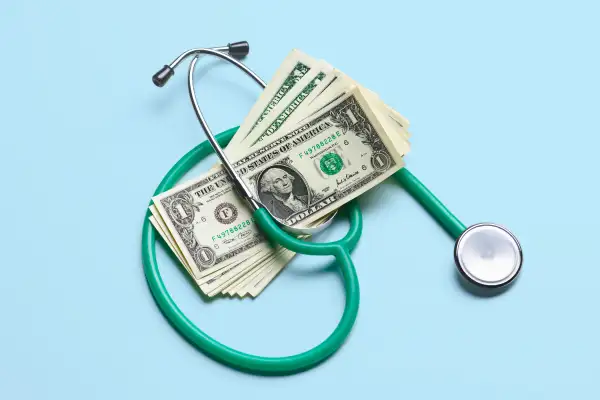Why You Really Shouldn’t Ignore a Flexible Spending Account

There is no crystal ball to predict when you'll get sick or what medical bills will follow. But you can be better prepared to handle the health care costs you can see coming: co-payments for doctor visits and prescriptions, new contact lenses and glasses, and teeth cleaning, to name a few. Simply stash pre-tax dollars in a health care flexible spending account (FSA) at work—and then spend the money wisely before the annual deadline. Here's how to make the most of this perk.
The Case for Signing Up
With an FSA, you can pay for medical expenses for you, your spouse, children under 27, and other dependents. While 87% of employers with 500 or more workers offer the benefit, only 21% of eligible employees take advantage of it, according to human resources consulting firm Mercer's 2016 National Survey of Employer-Sponsored Health Plans.
If you plan ahead and allocate the right amount to your FSA, it's a valuable tax break. You can put as much as $2,600 in an FSA for 2017, up from $2,550 in 2016, and you owe no income taxes on your contributions. With an average annual contribution of $1,306, the Mercer survey finds, you would save $327 in taxes if you are in the 25% tax bracket.
Your employer must make the funds for the entire plan year available at the beginning of the year. Once you tell your employer how much to deduct from your paycheck, you can start spending the FSA funds before all the money has shown up in your account.
The Best Strategy for Claiming All Your Money
The caveat is that you generally have to spend the money in your FSA within the plan year or lose the funds—an average of $52 in FSA dollars go unspent, according to Mercer. Once you commit, you can't change or revoke the payroll deductions unless your employment or family status changes.
"Don't get caught up too much about losing money," says Paul Fronstin, director of health research at the Employee Benefit Research Institute. "You have to weigh how much you save on taxes and how much you could lose."
If you do have money leftover in your FSA at the end of the plan year, you might be able to either take an extra two-and-half months to use it, or roll $500 over to the next year. Your employer can offer one of the two options (or neither), but not both.
More than half of all employers choose the carry-over option to discourage wasteful spending, says Jody Dietel, chief compliance officer at WageWorks, an employee benefits company that partners with 45,000 employers. Between 35% and 40% of employers offer the grace period. At the rest, you have until Dec. 31 to use or lose the funds.
Read Next: 42 Ways to Spend FSA Cash Before the Year-End Deadline
The good news is you can get a little creative with medical expenses. The term covers anything from medicines and hospital services to acupuncture and training a service dog. Among the eligible expenses, here are several that might help you budget for the next year. See WageWorks' full list here.
- Acupuncture treatments
- Annual physical exams
- Bandages and other medical supplies
- Birth control
- Blood pressure monitors
- Body scans
- Breast pumps
- Breast reconstruction surgery
- Capital improvements to your home, such as ramps, railings and support bars
- Childbirth classes
- Chiropractic care
- Cholesterol test kits
- Contact lenses and eyeglasses
- Copays, coinsurance, and deductibles for dental, medical, vision and prescription coverage
- Dental treatment, including teeth cleaning, but not teeth whitening
- Dentures
- Diabetic monitors, test kits, strips and supplies
- Diagnostic devices such as a blood sugar test kit
- Eye exams
- Eye surgery, including laser eye surgery and Lasik
- Fertility treatments and monitors
- First aid kits
- Flu shots
- Guide dog or other service animal (buying, training, and maintaining)
- Hearing aids and batteries
- Insulin
- Lab fees
- Mileage for travel to and from health care appointments
- Monitors and test kits
- Night guards
- Nursing services
- Orthodontia
- Over-the-counter reading glasses
- Physical therapy
- Pregnancy test kit
- Prescription sunglasses
- Prosthesis
- Psychiatric care
- Psychologists and therapy
- Stop-smoking programs
- Sunscreen
- Vaccinations and immunizations
- Walking aids like canes, walkers and crutches
- Weight-loss program (if it's a treatment for a specific disease diagnosed by a physician)
- Wheelchairs
- Wigs (upon the advice of a physician)
- X-rays